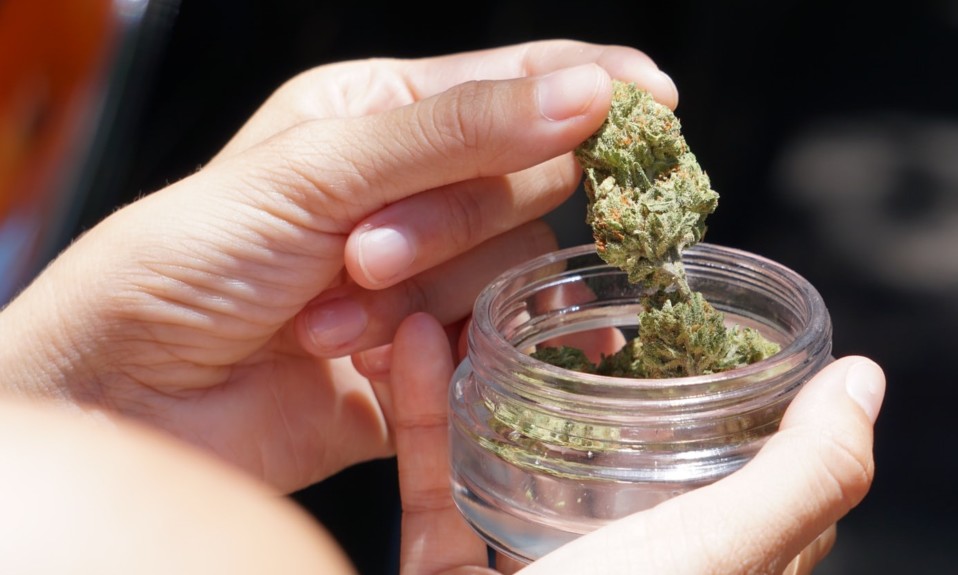There’s no doubt the illicit drug landscape is growing more harrowing by the day, but it’s hard to know exactly what’s true and what isn’t
By Jason Langendorf
Recent incidents involving marijuana found to contain trace amounts of fentanyl have added fuel to a building national narrative: Illicit drugs have become more dangerous than ever, and even moderate or mild marijuana consumption now comes with the risk of a lethal overdose.
Reports issued in the last month by public health and law enforcement officials in Connecticut and Vermont have warned of the dangers of fentanyl-laced marijuana in the New England area, echoing other fear-of-fentanyl stories stretching from New York to San Diego. According to Connecticut Department of Public Health (CDPH) commissioner Manisha Juthani, MD, the incident in the Constitution State was “the first lab-confirmed case of marijuana with fentanyl in Connecticut and possibly the first confirmed case in the United States.” The statement was backed by the findings of the Connecticut Forensic Science Laboratory.
On the Other Hand …
But some experts are skeptical.
Ryan Marino, MD, a medical toxicologist at Cleveland’s University Hospitals and an assistant professor at Case Western Reserve University’s School of Medicine, doesn’t deny the dangers of fentanyl or dispute the data from the CDPH lab results. He has concerns, however, about drawing conclusions from the forensic findings, saying “there’s just a lot of holes in what they’re presenting.”
I’m not saying this isn’t really happening or didn’t really happen. But there are easy ways to objectively prove whether it’s happening. And it just seems kind of irresponsible, in my opinion, to release the story and incite all of this fear in people without having that objective evidence.”
—Ryan Marino, Cleveland’s University Hospitals
For starters, there are the parameters of the research: The CDPH cites 39 cases of “overdose patients who have exhibited opioid overdose symptoms and required naloxone for revival. These patients denied any opioid use and claimed to have only smoked marijuana.” There is no mention in the CDPH’s statement of patient testing, let alone positive toxicology reports that confirm the presence of fentanyl in these patients.
Additionally, these incidents were reportedly dispersed across several jurisdictions in Connecticut, over the period of almost four months. According to Marino, those results run counter to the “clusters” of incidents experts would expect in cases such as these.
“When someone gets a bad batch of heroin or fentanyl,” Marino says, “we’ll usually see a dozen overdoses in a county in a couple days or over a week. For it just to be in Connecticut and to be so spread out, with no sort of connection, doesn’t really make any sense.”
There is also the simple matter of chemistry. In a recent Twitter thread reacting to the Connecticut findings, Marino described the prospect of overdosing from smoking marijuana laced with fentanyl as being “as improbable as a piano falling on your head.”
“I mean, anything’s possible,” he says. “It’s just incredibly unlikely. And I think there’s this misconception because people do smoke fentanyl, they smoke heroin. But when we say that someone is smoking fentanyl, they’re usually actually vaporizing it at a much lower temperature and a different process than you would use for a cannabis flower or other plant material, like a cigarette or something.
“Fentanyl is very rapidly destroyed by heat, especially by direct heat, and decomposes at pretty low temperatures. I think it starts breaking down below 500 degrees, and it should essentially all be gone before you get to 1000 degrees. The tip of a joint or a cigarette or a pipe would be around 1900, 2000 degrees, and a flame would be higher up in the 2000s-to-3000 range.”
There’s this idea that they’re just lacing everything with fentanyl to try to get people ‘hooked.’ But that’s really not the case. Drugs are expensive. They don’t just give away drugs for free.”
—Ryan Marino
From a business perspective, there’s little incentive to intentionally lace marijuana with fentanyl—which creates an additional expense and a different experience for the person using it, and threatens the lives (and future business) of a customer base.
“There’s this idea that they’re just lacing everything with fentanyl to try to get people ‘hooked,’” Marino says. “But that’s really not the case. Drugs are expensive. They don’t just give away drugs for free. Drug dealers don’t make nearly as much money as Hollywood would have us believe.”
Follow the Facts
There’s no un-ringing the alarm bell on fentanyl—and caution should be exercised in any approach to powerful opioids and illicit drug use. But to avoid repeating past patterns of fear-mongering and stigmatizing people who use drugs by first demonizing the substances they use, the public must be able to count on full transparency from public health and law enforcement officials.
“I’m not saying this isn’t really happening or didn’t really happen,” Marino says. “But there are easy ways to objectively prove whether it’s happening. And it just seems kind of irresponsible, in my opinion, to release the story and incite all of this fear in people without having that objective evidence.”
Photo: Elsa Olofsson














